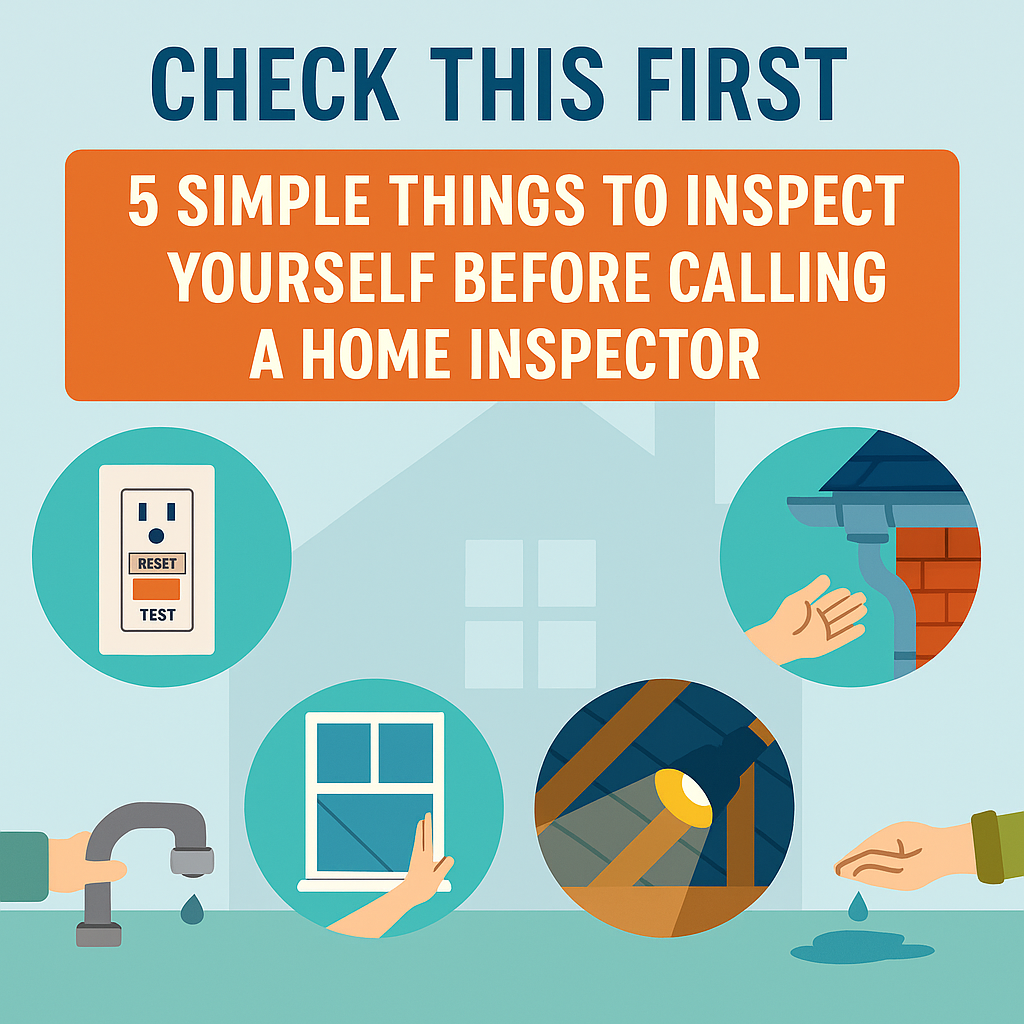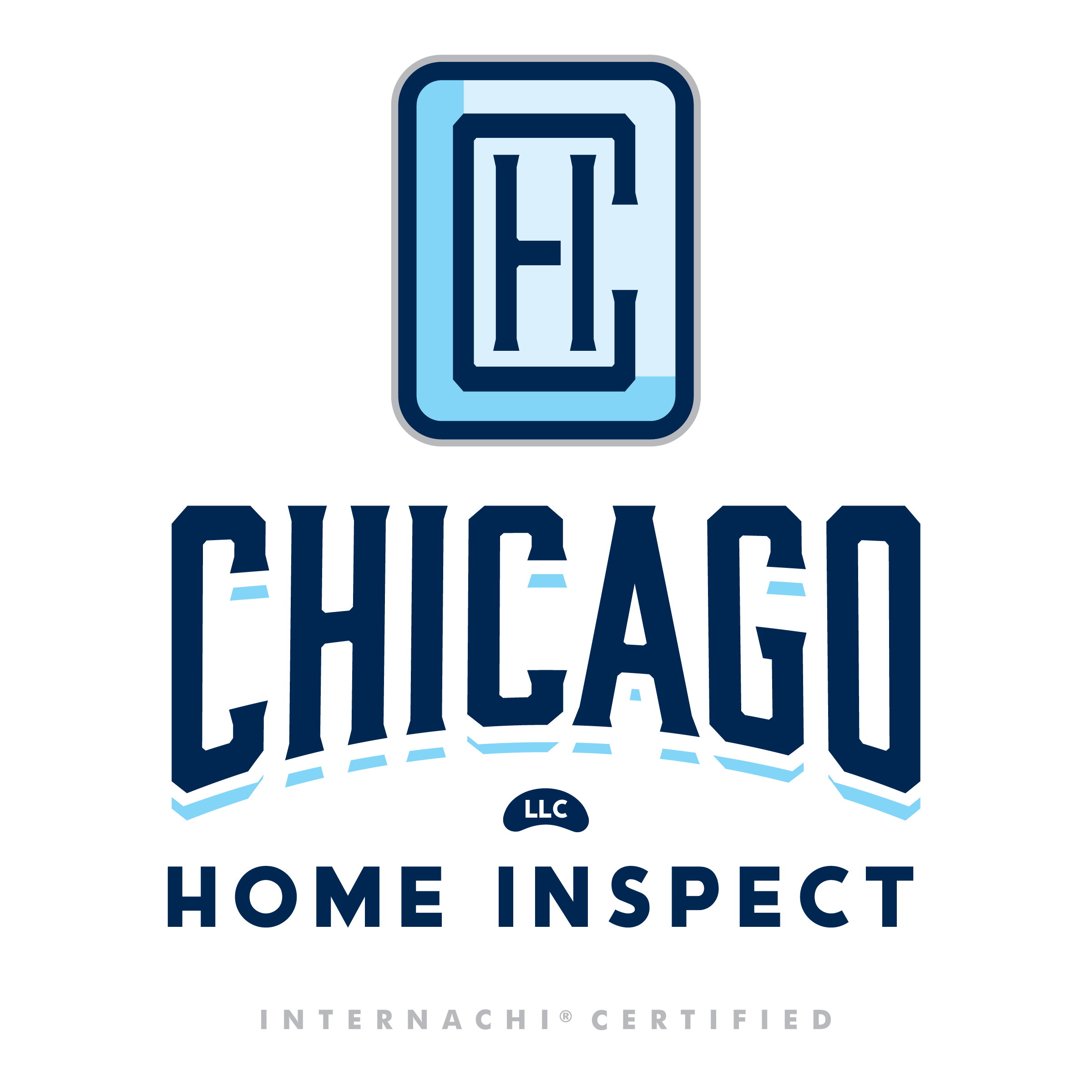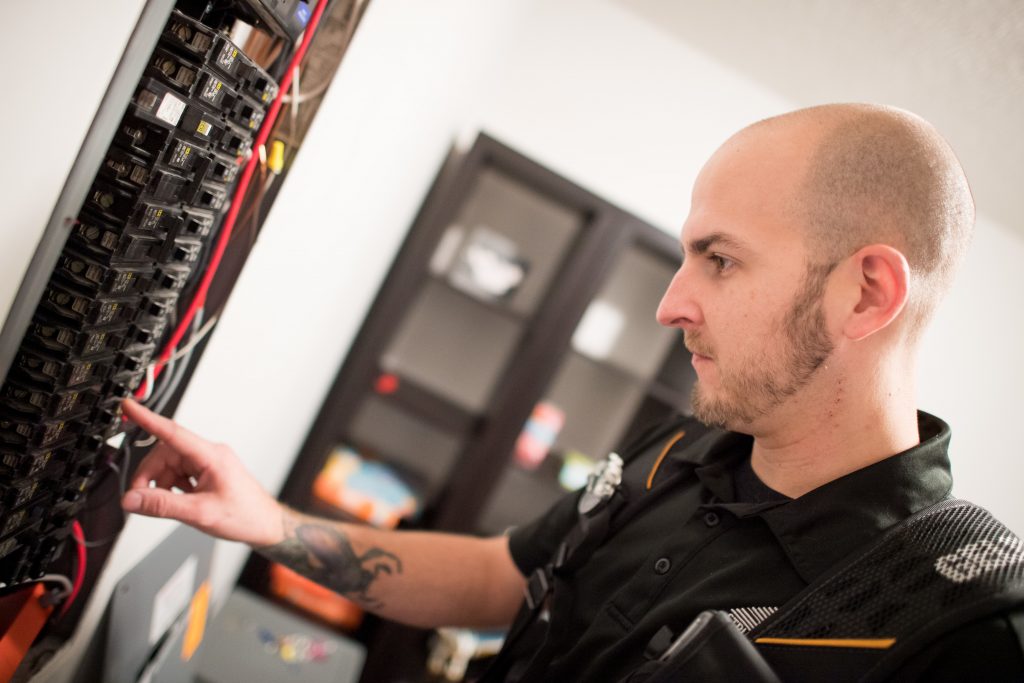
Practical advice from professionals offering home inspection services in Chicago.
Introduction
Whether you’re preparing to sell your home, considering a purchase, or just trying to stay ahead of maintenance, scheduling a home inspection is a smart move. But before you book an appointment, there are some basic checks you can do yourself.
These DIY inspections won’t replace a full professional report, but they can help you uncover obvious issues early, understand what an inspector might find, and even avoid wasting time or money on problems that are easy to fix yourself.
As providers of home inspection services in Chicago, we encourage proactive homeowners and buyers to take the following five steps before scheduling a professional visit. Each one offers a quick look into a different part of your home’s structure and systems.
1. Test All GFCI Outlets
Ground Fault Circuit Interrupter (GFCI) outlets are safety devices required by code in areas where electricity and water may come into contact—typically kitchens, bathrooms, garages, basements, and exteriors. Their job is to shut off power if an imbalance is detected, protecting you from electric shock.
Why It Matters
Defective GFCIs are a common finding during home inspections, and they often lead to recommendations for repairs or upgrades. Fortunately, checking them is quick and easy.
How to Check Them
- Locate the GFCI outlet—it will have “TEST” and “RESET” buttons on its face.
- Press the “TEST” button. You should hear a click, and any device plugged in should turn off.
- Press the “RESET” button. Power should be restored.
- If nothing happens, or the outlet doesn’t reset, the GFCI may be faulty.
Pro Tip
Sometimes one GFCI outlet controls multiple downstream outlets. If several outlets aren’t working, trace them back to a single GFCI and try resetting it there.
What to Do If It Fails
If the outlet doesn’t respond properly, it should be replaced. For safety, this is best handled by a licensed electrician—especially in older homes where wiring may not meet current code.
In Chicago homes, especially those built before 1980, GFCIs may be missing entirely in older bathrooms or kitchens. Their absence is a common red flag on inspection reports.
2. Check for Slow Leaks Under Sinks
A slow leak under a sink can go unnoticed for months—until it causes mold, water damage, or a musty smell. Inspectors routinely find soft cabinet bottoms or warped trim caused by leaks that homeowners never noticed.
Why It Matters
Leaks under sinks are minor repairs, but if left unattended, they often show up as costly problems in a home inspection. Knowing what’s happening under your fixtures can prevent embarrassment, price drops, or last-minute repair work.
How to Check It
- Remove any items from under the sink.
- Wipe down the visible pipes with a paper towel.
- Run water from the faucet for 2–3 minutes, including the sprayer if there is one.
- Wait another 5 minutes and check for drips or wet spots.
- Look at the base of the cabinet for water stains or wood swelling.
What to Do If You Find a Leak
In many cases, a loose connection or worn-out washer is to blame. If you’re handy, you can often fix this yourself. If not, a plumber can handle minor fixes quickly and affordably.
Being able to say, “we just had this leak fixed,” goes a long way during a showing or inspection.
3. Open and Close All Windows
Inspectors often report on windows that won’t open, don’t stay up, or show signs of water intrusion. It’s an easy thing for homeowners to overlook—especially in unused rooms or during winter months—but it can raise questions about deferred maintenance.
Why It Matters
Sticky, damaged, or painted-shut windows can suggest neglect. They may also prevent proper ventilation or egress in emergencies. In Chicago, older homes often have wood-frame windows that expand and contract with seasonal changes—leading to stuck sashes or gaps.
How to Check It
- Go room to room and open every window at least halfway.
- Make sure it stays up without sliding back down.
- Check the locking mechanism to ensure it closes securely.
- Look around the window trim for water stains or mold.
- Feel for drafts if it’s windy or use a candle to check airflow.
What to Do If It’s Not Right
Minor lubrication or cleaning can solve many sticking issues. If the window won’t stay up, a broken sash cord or balance spring might be to blame. These can be repaired or, in some cases, replaced without replacing the entire window.
Knowing this ahead of your inspection gives you options to fix or disclose proactively.
4. Look in the Attic for Signs of Trouble
The attic is out of sight and often out of mind—but it can reveal some of the most expensive defects during a home inspection, such as roof leaks, mold, or poor insulation.
Why It Matters
As professional providers of home inspection services in Chicago, we often find attics that show signs of condensation, water intrusion, or rodent activity—issues that could have been spotted earlier with a flashlight and five minutes of effort.
How to Check It
- Only enter the attic if it’s safe. Use a sturdy ladder and never step off the joists.
- Look for:
- Water stains on roof decking or rafters
- Wet insulation or compressed areas
- Mold or mildew smells
- Droppings or nests from rodents or birds
- Feel for excessive heat—poor ventilation can trap hot air and damage shingles over time.
What to Do If You See Problems
If there’s visible staining or mold, take photos and consider a contractor or roofer evaluation. Rodent signs call for pest control.
Not every attic needs a deep dive, but checking it gives you an edge before inspection day.
5. Walk Around the House After a Rain
Drainage issues are one of the most overlooked causes of foundation problems. In Chicago, older homes often have settled soil, broken downspouts, or improper grading that causes water to flow toward—rather than away from—the house.
Why It Matters
Water intrusion is a leading cause of long-term structural damage. Wet basements, cracked slabs, and mold issues often trace back to poor drainage. Catching this early is one of the smartest steps you can take.
How to Check It
- Wait until a moderate rain has fallen—or turn on a garden hose for 15–20 minutes near gutters.
- Walk the entire perimeter of the house.
- Look for:
- Pooling water near foundation walls
- Clogged or overflowing gutters
- Disconnected or short downspouts
- Soil erosion or exposed roots
- Check basement corners and floor drains for signs of dampness.
What to Do If You Find Issues
Add downspout extensions, regrade sloped soil, or consider a sump-pump check. These are all manageable tasks that help prevent serious moisture damage.
Final Thoughts
While these five checks won’t replace a professional inspection, they can help you get ahead of simple issues, feel more informed, and potentially avoid surprises on your report. Buyers appreciate transparency, and sellers can fix or disclose minor concerns without last-minute scrambling.
As always, the goal of a full home inspection is to identify both visible and hidden concerns with your property’s structure, systems, and safety features. But when you walk into the process informed, you’ll get more value out of the report—and be ready to take action when it counts.



